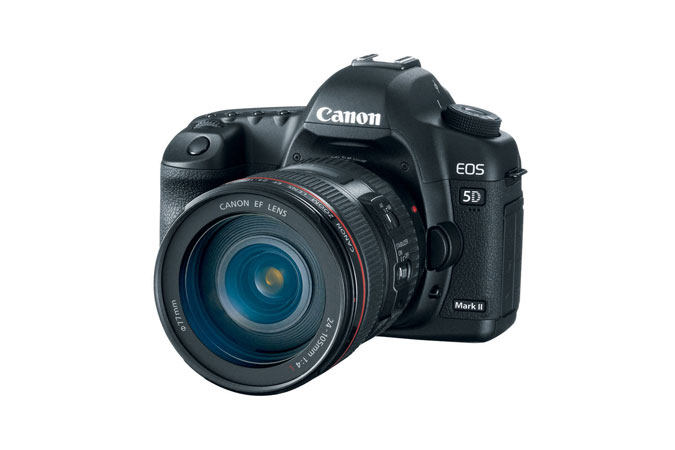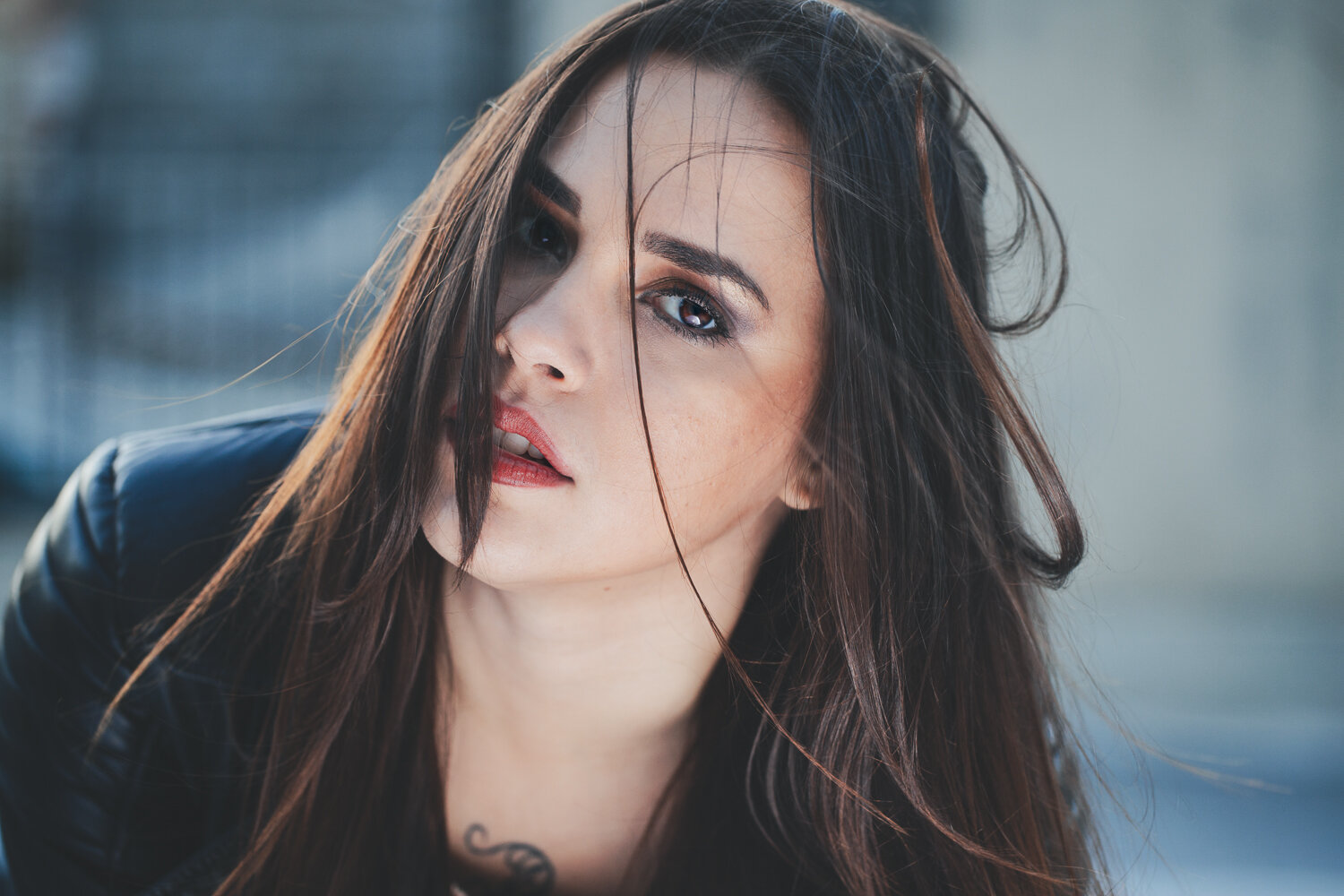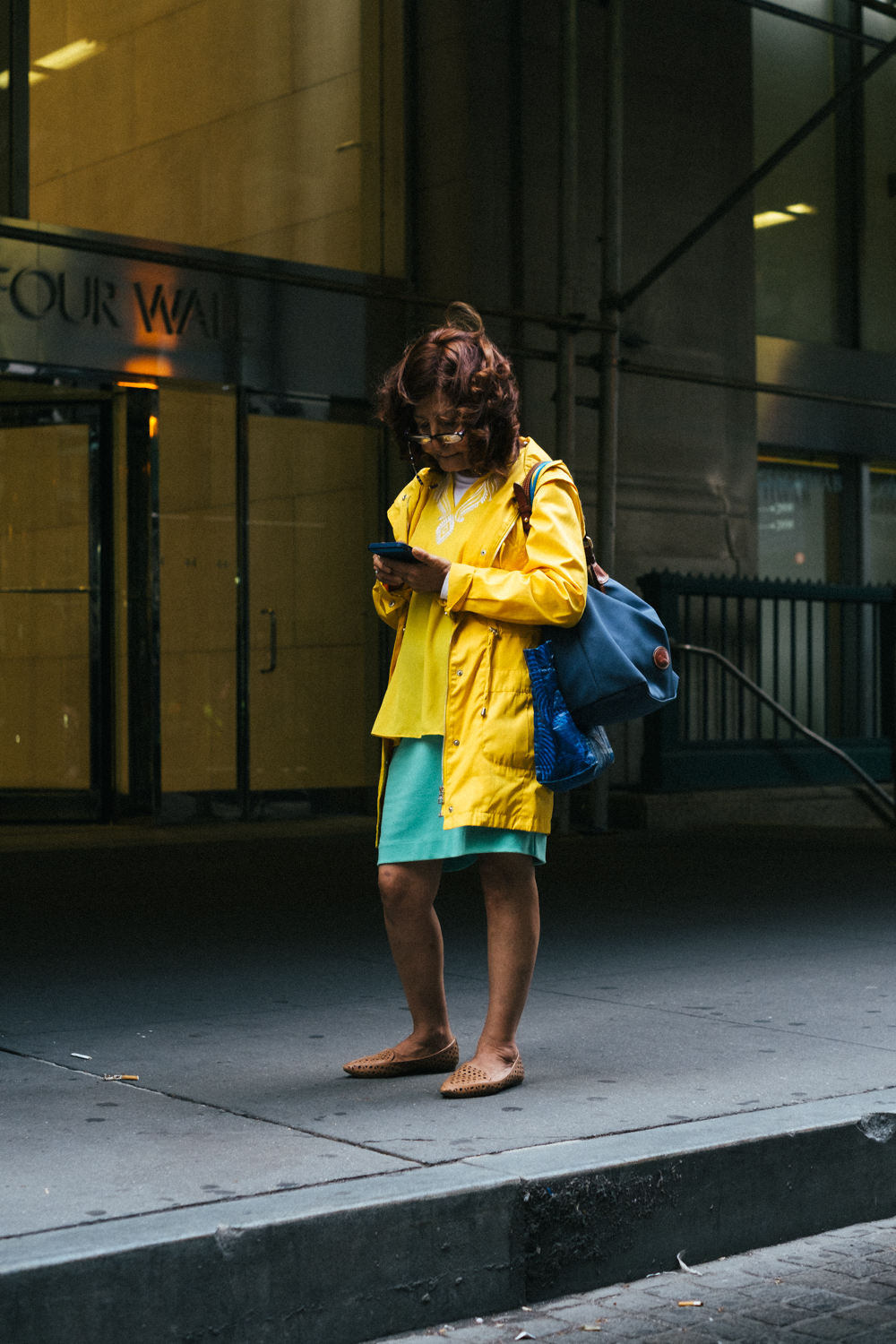Canon 5D Mark II Review in 2022: Is It Still Worth It?
The little – well, kind of big – camera that could: fourteen years after it's release, the Canon 5d Mark II remains a top choice... for a certain kind of photographer.
Note: this article has been updated to reflect the Canon 5D Mark II’s value in 2022.
When a photographer is ready to graduate to a full frame camera body, the drastic price increase is sure to shock. On average, full frame cameras cost over $1,000 more than their APC-S or Mirrorless counterparts.
Naturally, the smart buyer will first investigate the older, used full frame options to save a few hundred dollars. That may be how you found your way to this page. If so – kudos, and welcome!
This review is going to list the many pros – and the most notable con – of the Canon 5D Mark II in 2022, and whether or not it's still a worthy camera. Let's dive in!
Alisa on the rooftop. Canon 5D Mark II, Canon 50mm f/1.2.
Canon 5d Mark II Technical Specs
Weight: 56.0 oz (1,588 g) (includes batteries, kit lens)
Size: 6.0 x 4.5 x 3.0 in. (152 x 114 x 75 mm)
Sensor Type: CMOS
Effective Megapixels: 21.1
Image Resolution: 5616 x 3744 (21.0 MP, 3:2),
Image File Format: JPEG, RAW, sRAW1, sRAW2; 14-bit CR2
Movie Resolution:1920x1080 (30p). 640x480 (30p)
Movie File Format: .MOV (Video: H.264, Sound: Linear PCM)
Lens Mount: Canon EF
Auto Focus Type: 9 AF Points (1 Cross Type) + 6 AF Assist Points
Viewfinder: Optical / LCD
Maximum ISO (native): 6400
Shutter Speed Range: 30 - 1/8000
Usable Memory Types: CF1 / CF2 / Microdrive
Parrots in captivity. Canon 5D Mark II, Canon 50mm f/1.2.
Canon 5d Mark II 2022 Review
There's a reason this camera has stayed relevant over 10 years and countless successors: it gets results.
The Mark II is a power house of image quality. The sheer detail capture by the sensor is head-spinning, and it's difficult not to spend hours pixel peeping in Lightroom just to gawk over it.
Thanks to the massive sensor, bokeh lovers will be in heaven – even an f/2.8 lens can look dramatically shallow. Isolating your subject is effortless, and focus seems to fall off in a filmic, milky gradient.
I often write about the ineffable character of imaging technology on this magazine – after all, in the world of aesthetics, you can't discount the subtleties – but the Mark II is firmly distinct in its visual flavor.
Take a look at the below snap – I quickly grabbed this image while walking backwards. The composition is thoughtless, the camera was set to aperture priority mode, and yet it... looks cinematic enough to be a still from a feature film. That's the magic of this camera: anything you photograph is going to look gorgeous. It almost feels like cheating.
A wall through the woods in upstate New York. Canon 5D Mark II, Canon 50mm f/1.2.
From a usability standpoint, the dials and buttons feel natural. If you're familiar with any other DSLR in the Canon ecosystem, you'll feel right at home – though it should go without saying that there's no touch screen to be found here.
The Mark II uses CF cards to house its bulky RAW files, which makes minimal difference in practice, but it's worth nothing that you'll need to pick up a few CF cards and a CF card reader if you intend to make the jump.
A baby. Canon 5D Mark II, Canon 100mm f/2.8.
Canon 5D Mark II vs Canon 5D Mark III: How Does it Compare?
The Mark III, released 4 years after the Mark II, features an upgraded sensor, ISO up to 25600, and a 61-point wide-area autofocus system (identical to the Canon EOS -1DX) supplemented with Canon's proprietary Intelligent Tracking and Recognition (iTR).
While the Mark III is a fabulous camera that largely mitigates the autofocus issues of the Mark II, the ~$800 price hike presents a whole new tier of more modern competitors – including the Canon 6D, Sony Alpha a7R, Pentax K-1, and the Nikon D610.
The Mark II's absurd affordability is it's greatest competitive edge, occupying a space in the market with no real competition at it's price point. For that reason, we'd recommend the Canon 5D Mark II over the Mark III in 2019.
How Much Dynamic Range Does the Canon 5D Mark II Have?
Technically, there's a mathematical answer to this: the Canon 5d Mark II has 10 stops of dynamic range (you can find a long, technical analysis of that figure here). Compare that to the 15-stop Sony A7R iii, and it doesn't seem all that impressive.
In real world use, however, the latitude of the RAW files is simply stellar. It's true that by ultra-modern standards, the highlight and shadow recovery isn't top of the line, but it's arguable that we're at a point of diminishing returns there anyway.
Below, we have an overexposed image of flowers against a blue sky – pretty much a worst case scenario for the Canon 5D Mark II. You can clearly see the limits of recovery: the rim lighting around the flowers is blown to pure white with no hope of recovery, but note the detail pulled back from the white values in the middle of the frame.
A flower. Canon 5D Mark II, Canon 50mm f/1.2.
More impressive than the highlight recovery is the shadow detail you can pull from near pitch-black values shot by the Canon 5D Mark II. The below sunset shot is a perfect example. Of course, at these extremes, you're bound to see colorful noise in the recovered shadows – but the detail still exists, and it only takes a bit of coaxing in Lightroom to pull out.
A girl on the beach. Canon 5D Mark II, Canon 50mm f/1.2.
What's the Catch?
So why can't I give this camera the Shark and Palm seal of approval? It's inexpensive, it has gorgeous image quality, the RAWs have impressive dynamic range... but the Canon 5d Mark II has the most maddening autofocus system of any modern Canon DSLR.
That's right – autofocus is the achilles heel of the Mark II. Even with high end L-series Canon glass, you're going to struggle to lock focus in anything less than broad daylight on the center autofocus point. It's a double whammy, because the large sensor and fast lens selection makes you want to shoot wide, wide open – but when you miss focus at f/1.2 on a full frame sensor, it really shows.
You'll need to get accustomed to manual focus – or learn meditative breathing as you desperately try to lock focus on your moving subject.
Luckily, this only really matters if you shoot something like sports, street, or journalism. For portraiture, still life, or landscape – don't let us scare you! You'll be overjoyed with this camera.
But if reliable autofocus is important to you, you're looking for the Canon 6D.
Joe Findley in LA. Canon 5d Mark II, Canon 50mm f/1.2.
Where Can I Find the Canon 5d Mark II?
You can get your own used Mark II to tune of 450-550 dollars on Amazon. If you live in a larger city, it's not uncommon to find a rather beat-up version offered for slightly less, so keep an eye out.
Puerto Vallarta from above. Canon 5D Mark II, Canon 50mm f/1.2.
What do you think of the Canon 5D Mark II? Do you still use it in 2022?
Sound off below, and we'll include your feedback – and your Instagram handle – in the updated version of this article.
PS: Looking for some new lenses for your Canon camera? Click here to read reviews on the best (and worst) glass available.















